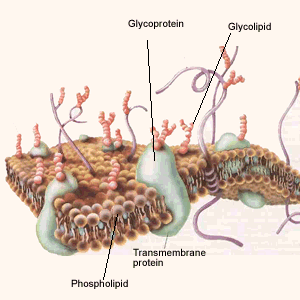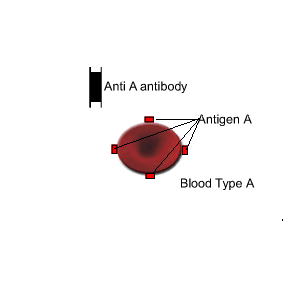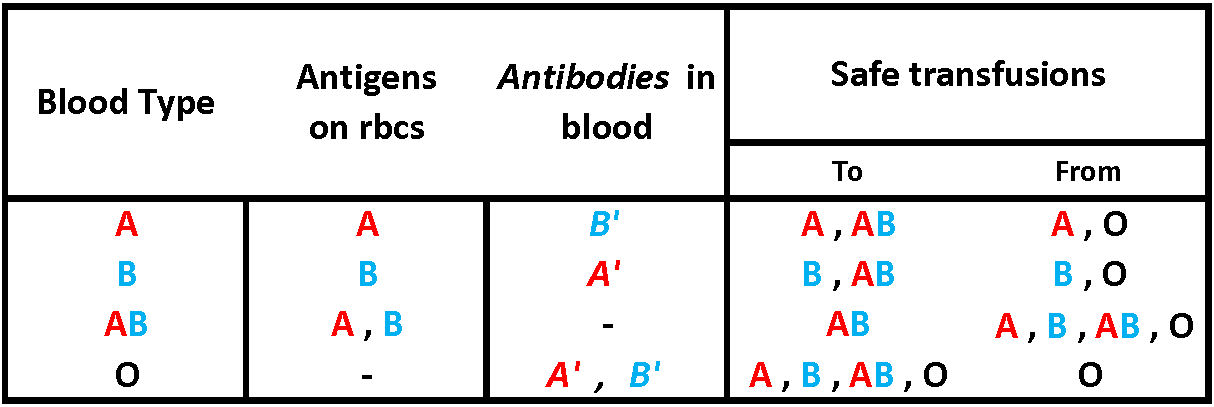Plasma membrane-ABO blood groups
The cell membrane is often described as a fluid mosaic. The cell membrane resembles a mosaic because of the many proteins that are embedded in a framework of phospholipids. The membrane is fluid which allows for the proteins to drift while the phospholipid bilayer remains intact.
The outside layer of the membrane is quite different to the internal layer. The outside surface has carbohydrates (chains of sugar molecules), shown in pink, bonded to proteins and to the phospholipids. A protein with sugars attached to it is called a glycoprotein, while a lipid with sugars attached is called a glycolipid. The sugar portion of glycolipids and glycoproteins differs from species to species and from individual to individual in a particular species.

In this unit we will take a simple view of the ABO blood grouping without looking at the Rh factor.
Two types of antigens are present on the surface of red blood cells and all of the red blood cells in an individual contain the same antigens. A person whose red blood cells have the "A antigen" has the blood type A. People whose red blood cells have the "B antigen" have the blood type B. Some people have red blood cells that contain both "A and B antigens" so they have the blood type AB. Other people have red blood cells with "neither A nor B antigens" so they have the blood type O.
Individuals with blood type O have no ABO antigens and therefore, their blood will not be rejected when it is given to to individuals with blood type A, B or O. People with blood type O are known as universal donors but they themselves can receive blood type O only.
Individuals with blood type AB do not make any A or B antibodies. Their immune system does not reject blood types A, B or O. Consequently, they are known as universal receivers. However, their blood will clot when given to people with every other type because they produce both A and B antigens.
- A person does not have antibody to his own antigens
- Each person has antibody to the antigen he lacks (only in the ABO system)
A summary is given in the table below.
Blood
group |
Antigen
on the red cell membrane |
Antibody
found in the body |
A |
A |
anti-B |
B |
B |
anti-A |
AB |
A
and B |
neither
A or B |
O |
neither
A or B |
anti-A
and anti-B |
Below is a table showing safe transfusions. (taken from http://www.mun.ca/biology/scarr/ABO_bloodgroup_transfusions.html 5/01/2015 10.11 AM)

People who have
the blood type AB produce antibodies against which antigens?
Those with blood type O produce antibodies against which antigens?
What antibodies does someone with the B Blood Type produce?
Can a person with Blood Type A give blood to a person with Blood Type O?
Explain.
Which blood type is known as a universal receiver? Explain
Which blood type is known as a universal donor? Explain
